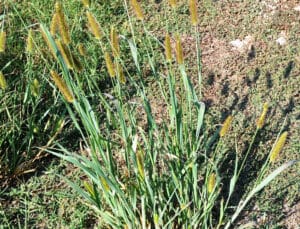Cupressus
Description
The Leyland Cypress is America’s most planted privacy tree for a reason. For starters, this amazing tree grows up to 3 to 5 feet each year, boasts feathery soft, lush foliage, and is drought tolerant. Strength and beauty in one? Check.
Well-known for their iconic columnar silhouettes, Leyland Cypresses grow very fast and thicken to create a solid wall. And their textured foliage is soft to the touch – no unpleasant thorns or prickly leaves. Plus, it stays green year-round, giving you complete privacy. Though your Leyland Cypress grows rapidly, it’s easily pruned to your desired shape and height. But even without trimming, your Leyland Cypress trees will grow in a uniform, symmetrical shape that gives you a dense, living wall.
Planting
Leyland Cypresses grow to heights of 50 feet with a canopy that can spread out to about 25 feet. If you want a taller hedge, screen or windbreak, young trees should be spaced at least 25 feet apart. If you’re growing a hedge, a space of 8 to 10 feet between trees is ideal. It will take about five to seven years for the space between the trees to fill. To plant a Leyland Cypress, dig a planting hole twice the size of the root ball and as deep as the soil in the container. Center the tree in the planting hole and back fill with soil. Create a watering ring around the perimeter of the planting hole (this helps divert water to the outer roots). Mulch with at least three inches of compost or pulverized bark.
Watering
Water your Leyland Cypress with at least an inch of water per week, keeping the soil moist but not oversaturated – generally, we recommend letting a garden hose run for about 1 to 3 minutes per week, depending on your soil. The deeper you water the tree, the better the tree will grow. If you’re not sure when to water, simply check the surrounding soil about 3 inches down – if the soil is dry here, it’s time to water.
Fertilizing
If your Leyland Cypress needs fertilizer at all, it should be fertilized with a shrub and tree fertilizer, unless a soil test shows that nutrients are low or missing. If the soil is missing or low on nutrients, use a nutrient-specific fertilizer.
Pruning
These trees require very little pruning. You may want to consider pruning if you are using them as a hedge; however, for the most part, they require little to no pruning.
| Growing Information | |
| Mature Height: | 40-60 ft |
| Mature Width: | 20-25 ft |
| Sunlight: | Full Sun |
| Bloom Time: | |
| Growth Rate: | Fast |
| Grows Well in Zones: | 6-10 |
| Your Growing Zone: | 6 |





